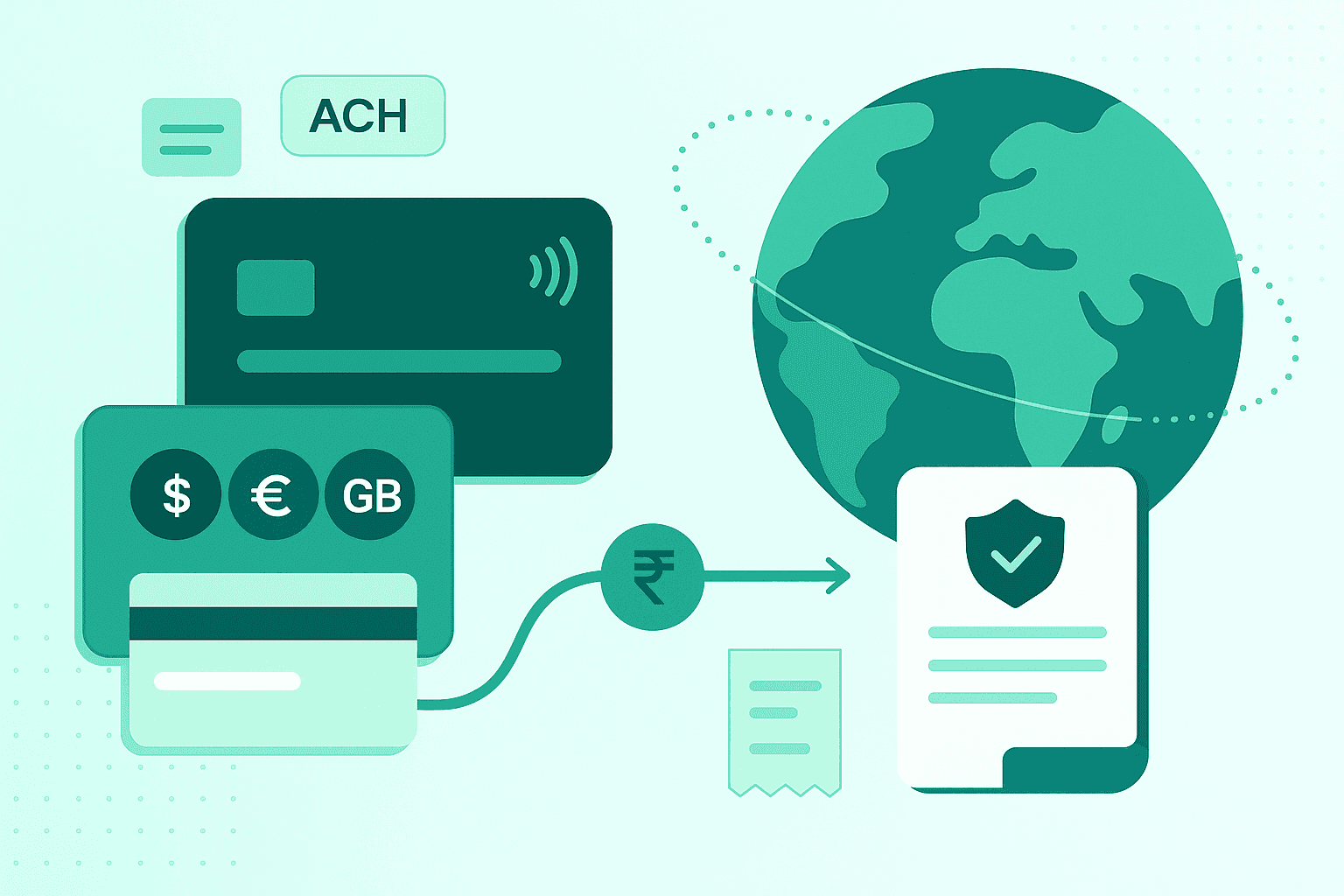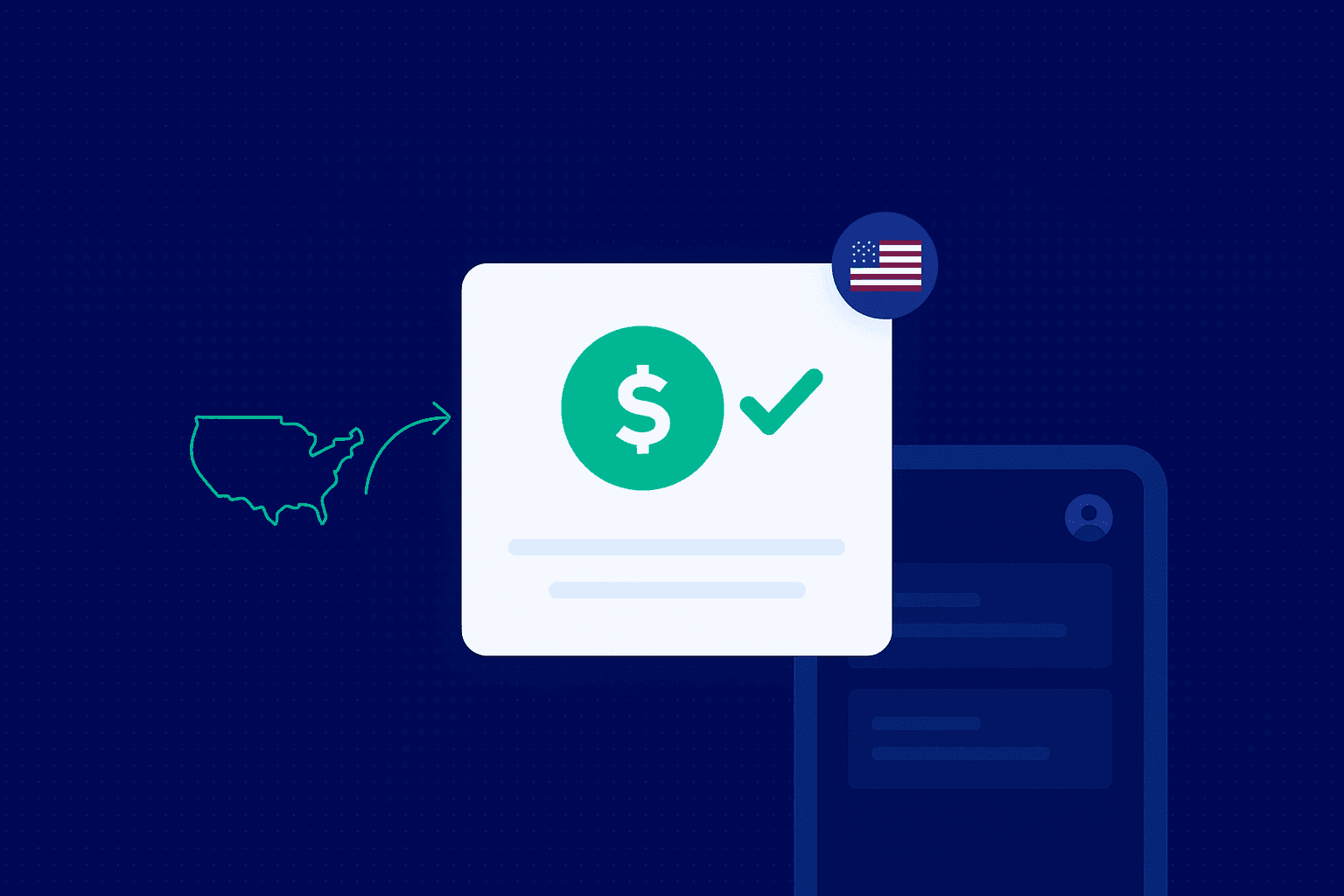What is Payoneer Payment Gateway: Features, Fees and more


Traditional cross-border payment has changed drastically over the last few years. Traditional banking methods are being challenged by innovative platforms like Payoneer, which offer a suite of digital payment services for global transactions.
Payoneer is used by freelancers, small-to-medium businesses (SMBs), and e-commerce sellers worldwide to send and receive international payments. In this Payoneer review, we’ll explore its key features, fees, security, user feedback (pros and cons), and how it stacks up against alternatives, including a look at where Skydo fits in as a modern solution for international payments. Our goal is to provide a neutral, informational overview so you can decide if Payoneer is the right payment gateway for your needs.
Payoneer at a Glance: Key Features and Highlights
- Global Reach: Available in 190+ countries and supporting transactions in 70+ currencies, making it truly global. Users can hold and receive funds in multiple currencies with local receiving account details (USD, EUR, GBP, JPY, AUD, CAD, and more) at topmoneycompare.co.uk.
- Marketplace Integrations: Direct integration with over 2,000+ marketplaces and platforms – including Amazon, Upwork, Fiverr, Airbnb, eBay, and Shutterstock – enables freelancers and sellers to get paid seamlessly from those channels.
- Multi-Currency Accounts: Provides virtual bank account details in various countries (US, UK, EU, Japan, Australia, etc.) so you can receive payments as if you had a local bank account in those regions. This multi-currency account system allows holding balances in different currencies and withdrawing when needed.
- Flexible Payment Options: Supports payments via bank transfers, credit/debit cards, and even ACH bank debit for U.S. clients. Payoneer’s Global Payment Service lets clients pay you in their local currency, which is especially useful for service providers and exporters.
- Business Tools: Offers enterprise features like mass payouts and API integration for businesses that need to automate payments at scale. There’s also a billing/invoicing portal, Payoneer Checkout for online stores (accepting 120+ currencies), and even working capital loans (through its Capital Advance program) for e-commerce sellers.
- Payoneer Card (MasterCard®): Users in supported regions can order a Payoneer prepaid card (physical or virtual) linked to their account to spend funds directly or withdraw cash at ATMs. (Note: The Payoneer card is not currently available in India, which can be a limitation for users in India.)
Pros and Cons of Payoneer
Pros ✅
- Wide Global Acceptance: Trusted by over 5 million users globally, Payoneer enables receiving payments from 190+ countries. It’s often a lifeline for freelancers and businesses in regions where other services (like PayPal) aren’t available, allowing them to get paid reliably.
- Multi-Currency Convenience: Ability to hold multiple currencies and get local bank details (e.g. US ABA routing number, EU IBAN) is highly valued. This makes it easier to receive money in clients’ local currency and then withdraw or convert at your convenience
- Marketplace & Platform Integration: Excellent integration with freelance marketplaces and e-commerce platforms (Upwork, Fiverr, Amazon, Airbnb, Shopify, and more) – you can link your Payoneer account to directly receive payouts, simplifying cross-border sales. Many users praise its ease of use in these scenarios/
- Regulated and Secure: Payoneer is a licensed, regulated financial services provider in multiple jurisdictions (registered as an EMI in the UK, compliant with the OPGSP framework in India, etc.), which provides confidence that it’s a safe and legitimate platform for handling funds. Customer funds are held in segregated accounts as per regulations, protecting your balance even if the company faces issues.
- Value-Added Services: Additional features include free digital FIRA documents for Indian users (Foreign Inward Remittance Advice, helpful for compliance), a robust mobile app (highly rated on app stores), and support for mass payouts and API integrations for businesses. These can streamline operations for companies handling large volumes of international transactions.
Cons ❌
- Fees and Charges: The fee structure, while transparent, can be complex and on the higher side for certain transactions. For example, receiving payments via credit card costs ~3% plus a fixed $0.49 fee, and withdrawing in a different currency incurs about a 3% currency conversion markup – which many small businesses find steep. There’s also a $29.95 annual account fee if you don’t meet a minimum activity ($2,000 received per year). These costs add up for low-volume users, and some competitors offer cheaper alternatives on FX rates and no annual fees.
- Region-Specific Drawbacks: Certain features aren’t universally available. For instance, the Payoneer Card is unavailable in some countries (like India), denying those users the convenience of instant spending or ATM withdrawals. Also, Payoneer doesn’t support some local payment methods in various countries, which could force users to rely on bank withdrawals that take a few days.
- Higher Fees for Small Transactions: For freelancers or small sellers, Payoneer’s minimum fees and forex markups can be significant for low-value transactions. If you receive only a few hundred dollars, the combination of percentage fees, fixed charges, and conversion rates might take a noticeable cut of your earnings. Some reviewers note that fees have increased in recent years and find alternatives more cost-effective for small transfers.
(Note: The pros and cons above are derived from user feedback and third-party reviews to present a balanced picture. Individual experiences may vary.)
How to Create a Payoneer Account
Getting started with Payoneer is free and relatively straightforward. Here’s a quick step-by-step guide:
- Sign Up: Visit the official Payoneer website and click on the Register (or Sign Up) button. You’ll be asked to choose an account type – freelancer, online seller, individual, or company, etc. Select the option that best describes your use case.
- Provide Details: Fill out the registration form with your personal or business information, contact details, and create a secure password. You’ll also need to enter your bank account information (where you’ll withdraw funds later). Make sure the name on your Payoneer account matches your bank account to avoid issues.
- Verification: Payoneer may require you to verify your identity by submitting a government ID, business documents, or bank statements (this is to comply with KYC regulations). Upload the requested documents and await approval.
- Email Confirmation: You’ll receive a verification email – click the link in that email to confirm your email address. Once your account is reviewed and approved, you can log in and start using Payoneer.
- Order Card (Optional): If your region is eligible and you want a Payoneer prepaid MasterCard, you can order one from your account dashboard. This card lets you spend your balance or withdraw cash at ATMs (note: fees apply for card usage).
Tip: After setup, explore the Payoneer dashboard. You can create additional currency accounts (USD, EUR, GBP, etc.), link marketplaces or clients for payment requests, and see your Fees section so you understand any charges upfront. Taking time to familiarise yourself with Payoneer’s interface will help you use it more effectively.
Payoneer Fees and Charges: A Quick Glance
Opening a Payoneer account is free, but there are various fees for transactions. Below is an overview of Payoneer’s fee structure for receiving and withdrawing money (note that exact fees can vary by country or account type):
- Receiving Payments:
From another Payoneer account: Free (no fee): If a client pays you from their Payoneer balance to yours, you generally won’t be charged a receipt fee. For marketplace payments, the fees and rates are decided by respective marketplaces.
Via Credit/Debit Card: 3.2% of the amount + $0.49 per transaction. (This method is typically used when a client pays through Payoneer’s credit card payment portal.)Via ACH Bank Debit (US only): 1% of the amount. U.S. clients can pay directly from their bank (ACH transfer) at a lower fee. Via Global Payment Service (local receiving accounts): Free in some cases. If you receive payments into your EUR, GBP, JPY, AUD, etc., Payoneer accounts in the same currency (e.g. a EUR payment into your EUR account), it’s usually free. However, for other currencies (e.g., receiving USD in Europe), a 1% or fixed fee may be levied depending on the amount received. - Withdrawing to Your Bank:
Once you have money in your Payoneer account, you will likely withdraw it to your local bank account (e.g., INR for India, GBP for the UK). If you withdraw in the same currency as your Payoneer balance (available for major currencies in certain regions), Payoneer may charge a flat fee (for example, $1.50 for withdrawing USD to a U.S. account)If you withdraw in a different currency from your balance, a currency conversion fee applies. Payoneer typically uses the mid-market exchange rate and adds about a 3% markup on the conversion spread. - Annual Account Fee:
$29.95 per year – but only if your account is relatively inactive. This fee is charged only if you received less than $2,000 (or equivalent) in the preceding 12 months. Essentially, active users won’t pay this, but freelancers with low volume or seasonal earnings need to be aware of it. (Many competitors do not charge an annual maintenance fee at all, so this point often comes up in reviews.) - Other Fees:
If you opt for the Payoneer Card, there’s a $29.95 annual card fee, and using the card involves ATM withdrawal fees and possibly a currency conversion spread (~3.5%) for card transactions. Also, sending payments from your Payoneer balance to others can incur fees if the recipient is not a Payoneer user (up to 0.5–1% for local transfers or up to 3% for international transfers, depending on route and currency). Payoneer’s fee schedule can be a bit complex to navigate, so it’s a good idea to review their official fees page for your specific scenario.
In summary, Payoneer’s fees are transparent on their website, but not the most affordable in the market for certain transactions. If most of your payments come from marketplaces that directly pay into Payoneer or from other Payoneer users, you’ll save on fees. However, if you frequently get paid by card or need to convert currencies on withdrawal, you’ll want to factor in those costs. Always compare the net amount you receive via Payoneer versus alternative methods, especially for large payments where a 3% FX fee can be significant.
✏️: You can get a detailed breakdown of Payoneer fees with examples, right here
Payoneer User Reviews and Experiences
With over 5 million customers worldwide, Payoneer is undoubtedly a popular and trusted platform for cross-border payments. But how do users feel about its service? Let’s look at what real users and reviewers say about Payoneer’s usability, customer support, and fees – essentially, an aggregate of Payoneer reviews:
- Ease of Use: Generally, Payoneer earns high marks for its easy-to-use interface and straightforward onboarding. Many users appreciate that the platform (web and mobile app) is intuitive and streamlined. It’s simple to send payment requests or manage multiple currency balances. Payoneer’s integrations with freelance platforms also reduce manual effort in getting paid, which contributes to a positive user experience. In fact, Payoneer’s mobile app is well-reviewed, boasting around a 4.5/5 rating on app stores – indicating users find it convenient for managing accounts on the go. There are occasional reports of minor glitches or interface quirks, but nothing out of the ordinary. Overall, for day-to-day use, most say Payoneer “just works” smoothly for receiving and withdrawing funds..
- Customer Support: Payoneer offers multiple support channels, including a detailed help centre, email, live chat, and phone support. The company also actively responds to user queries on forums and review sites, which shows a degree of proactiveness. That said, user feedback on customer support is mixed. Some users report quick resolutions, while others mention slower response times or difficulty accessing live support unless logged in. Situations like account verification or payment delays can occasionally feel challenging to resolve promptly.
. Payoneer’s Trustpilot rating currently stands at around 3.8/5 (“Great”) from 59,000+ reviews. Many reviewers highlight successful transfers and reliability, while others point to occasional frustrations with communication or account holds. Overall, users generally find the platform dependable for day-to-day transactions, but experiences with customer care can vary depending on the situation..
- Fees & Value: User opinions on Payoneer’s fees are split. For some, Payoneer offers good value – especially those who use it heavily and exceed the $2,000 yearly threshold (thus avoiding the annual fee) and those receiving large payments (where a flat fee or percentage might be comparable or better than competitors). They like that basic features (sign-up, receiving from certain sources, internal transfers) are free. For others, particularly small freelancers or new businesses, the fees feel high or “hidden.” There are complaints about the 3% currency conversion charge and the annual inactivity fee.
Some reviews on G2 and other platforms describe Payoneer’s fee structure as complex or confusing, leading to unexpected costs. It’s worth noting that Payoneer’s fees are clearly listed in your account, but one has to proactively read them. In terms of competitiveness, Payoneer’s rates for certain routes (like ACH transfers or payments between Payoneer accounts) are quite good, but for other routes (credit card payments, currency conversion), you might find cheaper alternatives like Wise or Skydo.
Overall, users who value Payoneer’s convenience and global reach don’t mind the fees, whereas cost-sensitive users sometimes seek alternatives due to this reason
(The above sentiments are aggregated from user reviews on platforms like G2, Trustpilot, and Capterra, and do not reflect Skydo’s own opinions.)
Payoneer vs Alternatives: Which Payment Gateway to Choose?
While Payoneer is a well-established name in cross-border payments, it’s not the only option. Depending on your priorities – be it lower fees, better support, or specific features – you might consider some Payoneer alternatives that users often talk about:
- PayPal: A globally recognised payment platform that many individuals and businesses use. PayPal offers cross-border payments and is very user-friendly. However, PayPal doesn’t provide multi-currency local receiving accounts like Payoneer does. This means international payments via PayPal can incur higher conversion fees. PayPal also tends to charge higher transaction fees for receiving money (especially for business accounts). Many users maintain both PayPal and Payoneer, using PayPal for its widespread acceptance and Payoneer when they need to minimise fees on larger transfers or use specific currency accounts.
- Wise (formerly TransferWise): Wise is known for its transparent, low-cost currency conversion and multi-currency account (Wise Business and Wise personal accounts). In head-to-head comparisons, Wise often offers better exchange rates (mid-market with a small fee) versus Payoneer’s ~3% markup, making Wise cheaper for converting and sending money internationally. Wise also has no monthly or annual fees. However, Wise charges a percentage on receiving payments if you’re using it as a merchant account, and it doesn’t integrate with as many marketplaces for direct payouts as Payoneer does. Wise is a great alternative if low fees and exchange rates are your priority, but Payoneer might edge out in features for marketplace payouts and global reach.
- Stripe: Stripe is a payment processor often used by online businesses for accepting card payments globally. Stripe isn’t a direct competitor in the sense of offering a freelancer payout solution, but it’s an alternative for businesses that need to accept customer payments on their website or app. Stripe can deposit earnings to local bank accounts, but doesn’t provide the receiving accounts in multiple currencies that Payoneer does. If you’re an online seller with your own website, you might use Stripe for checkout and then withdraw via Payoneer or other methods. Further, currently, Stripe is "invite-only" in India, which doesn't make it a great Payoneer alternative.
- Bank Transfers & Others: Some businesses still use traditional wire transfers or bank remittance services for international payments. These can be reliable, but often come with high fees and less transparency (and longer wait times) compared to Payoneer or other fintech solutions. Other fintech alternatives include Airwallex, Statrys, Xoom, or country-specific services – each with their own fee models and features. For example, Statrys is an Asia-focused alternative that provides multi-currency business accounts, and it positions itself with strong customer service and FX tools (though it might be more relevant to Hong Kong/SE Asia users). The best choice depends on your specific needs – cost, speed, supported countries, and integration with your existing workflow.
Skydo as an Alternative:
One strong option to consider is Skydo itself. Skydo offers a fast, secure, and cost-effective solution for businesses and freelancers in India to receive cross-border payments. Unlike Payoneer’s relatively complex fee structure, Skydo uses a simple structure with no forex markup, which can translate to big savings – especially on larger transactions.
Skydo also prides itself on dedicated customer support and a seamless onboarding process, helping users avoid many of the pain points sometimes associated with Payoneer’s support and complex fees. In short, Skydo has become a go-to choice for many companies and independent professionals who want a transparent pricing model and a more personalised service. If you’re finding Payoneer’s fees or support challenging, it may be worth exploring how Skydo can make receiving international payments simpler and more affordable.
Choosing the right payment partner is crucial. We recommend comparing factors like user experience, fees, currency conversion rates, support quality, and compliance features across different providers before making a decision. What works best for a freelance graphic designer may differ from what an SME exporter needs. The good news is that services like Payoneer, Wise, and Skydo allow relatively easy sign-up, so you can even try multiple platforms and see which fits you best.
Conclusion
Payoneer has established itself as a reliable payment gateway for millions of users who need to transact globally. It excels in providing multi-currency accounts and integrations that make receiving international payments convenient for freelancers, SMBs, and online sellers. This 2025 review found that while Payoneer’s feature set is comprehensive and generally delivers on its promises, there are clear trade-offs in terms of fees and support. Payoneer is great for its reach and versatility – especially if you regularly work with international marketplaces or clients – but it isn’t the cheapest option for every scenario, and some users have encountered hurdles with customer service or account issues.
Ultimately, whether Payoneer is “worth it” for you depends on your volume of transactions and what you value most. If you prioritise a one-stop solution to get paid from anywhere in the world with minimal hassle, Payoneer is a strong contender. If you are very fee-sensitive or require top-notch support, you might explore alternatives or use Payoneer alongside other services to optimize costs.
In the rapidly evolving world of fintech, providers like Payoneer must continuously improve to stay competitive. And as users, staying informed is key – always review the latest fees and policies, and don’t hesitate to switch or use multiple platforms to maximise your benefits. We hope this updated overview has given you a clearer picture of Payoneer’s features, fees, and user experiences. Consider your own needs and perhaps give Skydo’s platform a look as well, as its flat-fee model could save you money on international transfers. Here’s to smooth and cost-effective global payments for your business!
Is Payoneer available in India?
Yes, Payoneer is available in India. Businesses and freelancers can use Payoneer to request and receive global payments in India. They also receive digital FIRAs against their international payments. Additionally, it also offers mass payouts and API support as a part of its enterprise solution.
Is Payoneer safe?
Is Payoneer the same as PayPal?
Does Payoneer charge a monthly fee?












